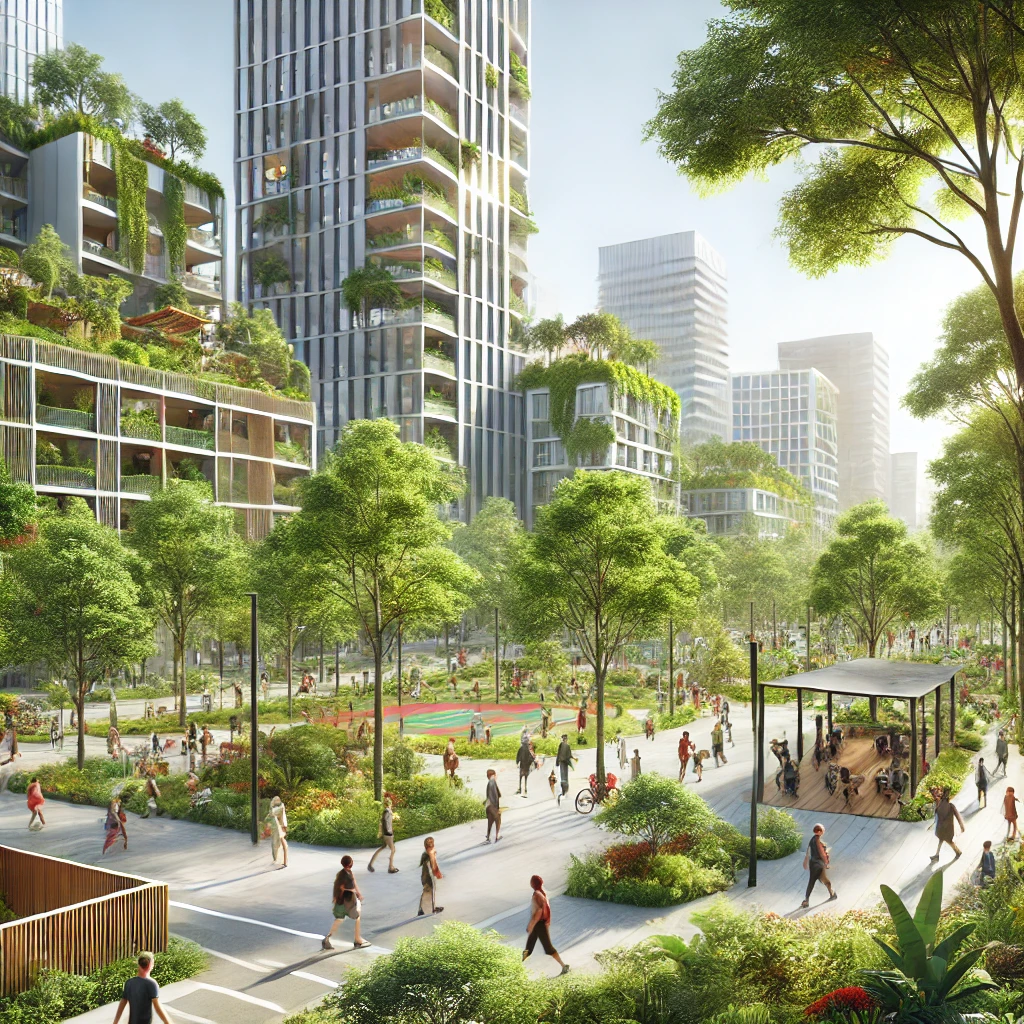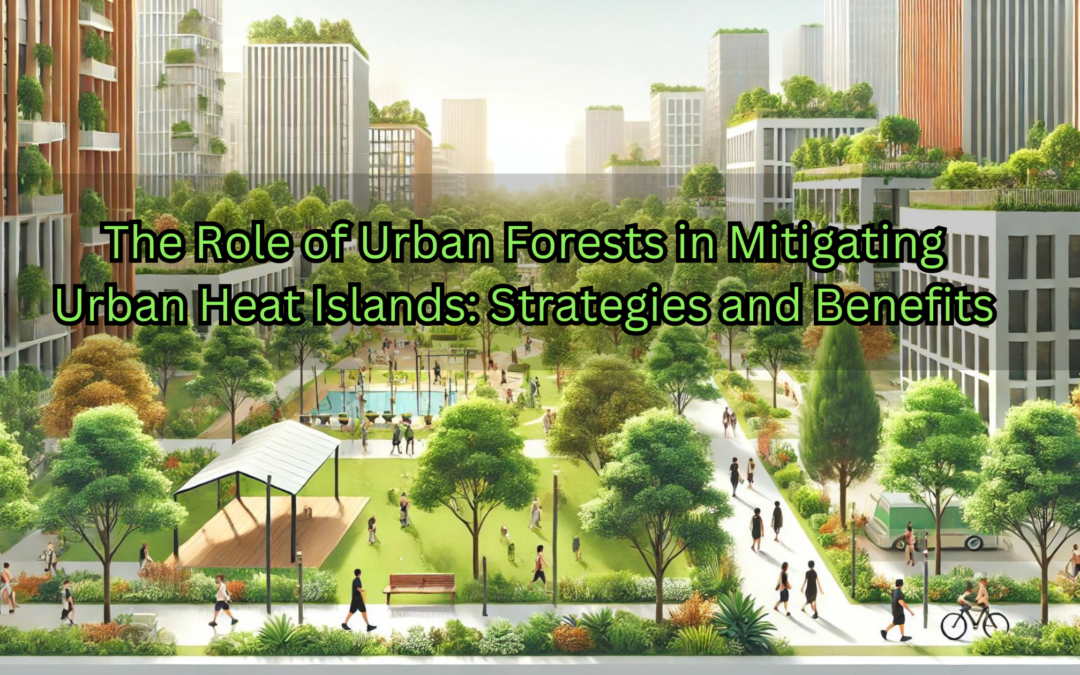Urbanization, characterized by the expansion of developed environments and the reduction of natural landscapes, has led to the formation of Urban Heat Islands (UHIs). These are areas within cities that experience significantly higher temperatures than their rural surroundings. This phenomenon is primarily due to the prevalence of heat-absorbing materials like concrete and asphalt, the scarcity of vegetation, and human activities that generate heat. Urban forests, which include parks, green spaces, and trees, play a crucial role in mitigating the effects of UHIs, enhancing air quality, and making cities more livable. This article explores strategies for incorporating urban forests into city planning and highlights their numerous social, economic, and environmental benefits.
Mitigating Urban Heat Islands
Urban forests contribute significantly to cooling urban environments through processes such as evapotranspiration and providing shade. Evapotranspiration involves trees and other vegetation absorbing sunlight and releasing water vapor, which cools the air and lowers surface temperatures. Additionally, the shade provided by trees reduces the amount of heat absorbed by pavements, buildings, and other surfaces, thereby decreasing the overall heat retention in metropolitan areas. This natural cooling effect is vital for making urban spaces more comfortable and habitable, especially during hot weather.
Enhancing Air Quality
One of the key benefits of urban forests is their ability to improve air quality. Trees remove particulate matter and pollutants from the atmosphere through their leaves, absorbing harmful substances like carbon dioxide (CO2), sulfur dioxide (SO2), and nitrogen oxides (NOx). By reducing the concentration of these pollutants in the air, trees help mitigate the adverse effects of air pollution on human health. Additionally, trees trap smoke, dust, and other particulates, preventing them from settling in urban areas. This cleaning process is crucial for improving respiratory health and overall well-being for city dwellers.
Improving Urban Livability with Urban Forests
The presence of urban forests greatly enhances the aesthetic and recreational value of cities. Green spaces provide opportunities for leisure, socialization, and relaxation, which are essential for both mental and physical health. Parks and tree-lined streets create appealing and inviting public spaces, encouraging outdoor activities and fostering a sense of community. Moreover, urban forests support biodiversity and ecological balance by providing habitats for wildlife, contributing to a healthier and more sustainable urban environment.

Methods for Including Urban Forests in City Planning
Incorporating urban forests into city planning requires careful and strategic approaches. Urban planners can integrate green infrastructure into new developments and redeveloped areas by including urban parks, vertical gardens, and green roofs. Planting new trees and maintaining existing ones are essential for the growth and sustainability of urban forests. Policies and regulations that promote the development of green spaces and tree preservation are crucial for ensuring the longevity and health of urban forests.
Economic Benefits of Urban Forests
Urban forests offer numerous economic advantages, including reduced energy costs and increased property values. Buildings shaded by trees require less energy for cooling, leading to lower energy expenses and reduced greenhouse gas emissions. Properties near green spaces often have higher market values, attracting residents and businesses to urban areas. Investments in urban forests can also create jobs in tree planting, maintenance, and urban forestry management, contributing to the local economy.
Conclusion
Urban forests are essential for mitigating the impact of urban heat islands, improving air quality, and enhancing urban livability. By implementing strategic planning and management practices, cities can incorporate green spaces into their infrastructure, yielding significant environmental, social, and economic benefits. Prioritizing the development and preservation of urban forests is crucial for creating sustainable, resilient, and healthy urban environments for current and future generations.
Urban park with tall trees, green spaces, and walking paths. People walk, jog, and relax. Shaded buildings and green roofs showcase harmony between nature and urban life. Join the EAT community for more information!
Related Articles and Resources:
- Unveiling the Health Benefits of Forests: A Guide to Enhancing Well-being Through Nature
- Green Infrastructure: The Key to Urban Resilience and Sustainability
- HOW TREES CLEAN THE AIR
- Urban Farming for a Great Green Future
- How to Grow Fruit Trees in Your Indoor Container Garden
- Building the future: The rise of Green Real Estate



